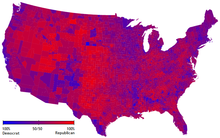The Melbourne temperature record is one of the “long time” instrumental records of Australian temperature. It starts in 1855 and continues to the present day.This is exactly the sort of record you want to have, long term and (until recently) well-sited.
The maximum temperature, which generally occurs in the middle of the afternoon, shows almost no trend at all until about 1995. However the minimum temperature, which generally occurs in the early morning before sunrise, shows an upward trend starting at about 1945. With no sunlight on the ground, the night air cools but the heat emitted by buildings and human activities, the “urban heat island” effect, lessens the cooling.We've seen this before here. Here comes the unnatural act:
The third temperature series in each of Figures 2 and 3 is of the average annual temperatures recorded in the ACORN-SAT data[3] which has been “homogenized” by the Bureau of Meteorology. A comparison of the measured and adjusted temperature increases from 1944 to 2013 is shown in Table 1.The adjustments are not done on a station-by-station basis, to correct for specific data collection issues (say, moving a station to a new location or upgrading the equipment). Rather, they are statistical calculations and manipulations which have some pretty serious drawbacks:
...
Two conclusions can be drawn from this analysis:
- There is a clear heat island effect in central Melbourne that is detectable in the minimum temperature measurements. It may be as much as 0.2 degrees per decade (or 1 degree over 50 years!).
- The adjustments made to obtain the homogenised ACORN-SAT Melbourne data reduce the apparent long-term temperature increases. So these adjustments compensate somewhat for the urban warming but by increasing the temperatures of the earlier years!
In more detail, the ACORN-SAT Melbourne minimum temperatures before 1990 are shifted up relative to the raw data. The stepped adjustments would suggest instrument changes but the BOM records show thus is not the case. Further, there is no sign of the step changes in the direct Melbourne temperature records. An upward correction is also applied to the maximum temperatures, but is applied only to the past, before 1990, and not the present.So multiply this single station by 1000, for the surface record. How accurate is the "homogenised" data? What are the error bars? Just how confident should we be in a measurement showing a tenth of a degree or two per decade?
A step adjustment does not compensate for a gradual rise due to an urban heat island effect.
Me, I like the satellite record because it avoids all of this statistical nonsense. Unfortunately, it only dates back to 1979.
If you're like me, you'll take the whole ZOMGTHERMAGEDDON!!eleventy! thing with a big grain of salt.



